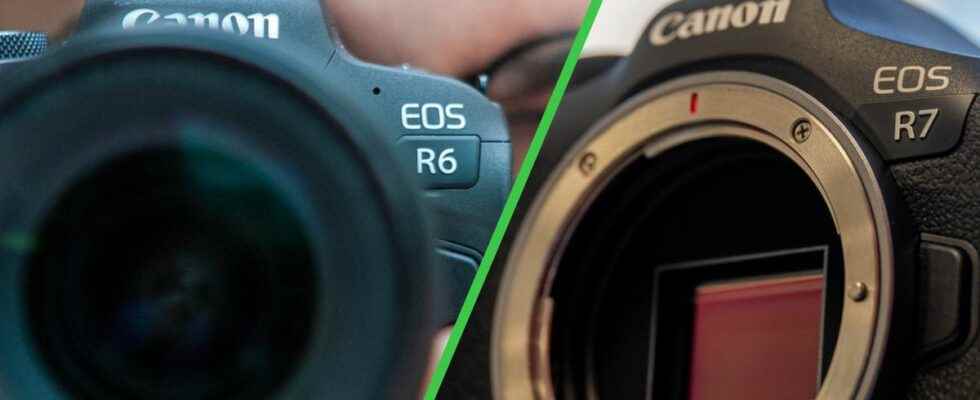During a fratricidal duel, the EOS R6 reminded us all that the new EOS R7 was not yet ready to dethrone the full frame. Which should you choose? Answer in our article.
With its recent EOS R10 and R7, Canon puts APS-C back in the spotlight by releasing the first small sensor cameras equipped with the EOS R mount. A worthy heir to the Canon EOS 7D, the R7 is a swift camera that wants to find its place in the wallet of sports photographers. But what is the manufacturer’s most high-end APS-C body worth compared to the EOS R6, a full-frame body with a sporty appeal?
Needless to deny it, the two hybrid devices have a family resemblance, both sporting a design in line with what Canon usually offers. If we note the surprising positioning of the joystick on the EOS R7, other differences point the tip of their nose, such as the viewfinder, less defined and less practical than that of its cousin R6. The full-frame hybrid gets a head start as soon as you get started.
The spearhead of the R7 and R6, the two boxes demonstrate unfailing speed. Autofocus is fast in all situations and Canon hybrids are almost on par. With 20 fps, the burst of the R6 is already very fast, but the R7 goes even further, displaying an infernal rate of 30 fps, a performance worthy of the R3, a sports monoblock from the Japanese manufacturer. Finally, it’s the buffer a little narrow from the R7, capable of recording up to 70 images in a burst against 130 for its opponent, which gives the advantage to full format.
In terms of quality, the R7 advances with a much better defined sensor, 32.5 Mpx against 20.1 Mpx for the full format. Unfortunately, this is not enough to dethrone the R6, which offers a higher ISO increase, as well as better management of low lights and digital noise. The 24×36 format retains the advantage of its size compared to the R7, which is better defined and offers better cropping possibilities. The R7 makes up for it in video, with unlimited recording time as well as 4K capture without cropping.
More upscale, the Canon EOS R6 retains the advantage over APS-C. Fast and delivering a very good overall performance, the EOS R7 will appeal to enthusiasts looking for speed. If the EOS R6 wins the duel, the R7 nevertheless remains an excellent choice, capable of taking advantage of the rare RF-S optics in addition to the now well-stocked RF fleet.
